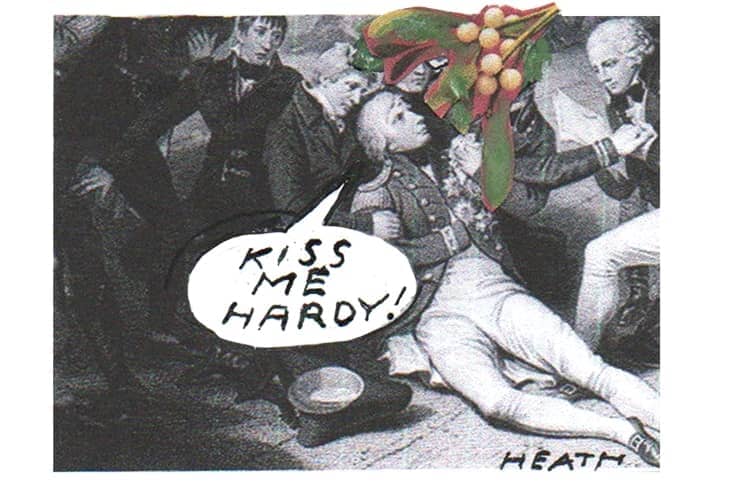Give us a snog. Pucker up at the Christmas party. Kiss me quick at the Nativity play. Will you be snogging this season? Thérèse Coffey, Secretary of State for Work, Pensions and Office Passion, has spoken. ‘I don’t think there should be much snogging under the mistletoe.’ she told Robert Peston on ITV. Sajid Javid, Secretary of State for Health, weighed in: ‘I’ll certainly be kissing my wife under the mistletoe — it’s a Javid family tradition.’
Not just a Javid tradition. Mistletoe is a pale green shrub which grows on the branches of broad-leaved trees. It is hemiparasitic, which means that it draws water and mineral nutrients, but not synthesised foods, from its host. Shakespeare thought it more dismal than cheerful. Tamora in Titus Andronicus laments having been enticed to a ‘barren, detested vale… Overcome with moss and baleful mistletoe’.
Mistletoe has long been thought to have magical and medicinal properties, especially when found on an oak. If you know your Pliny (or your Goscinny and Uderzo) you’ll know that the Druids in Gaul ceremoniously cut clusters of oak-grown mistletoe. In Asterix and the Golden Sickle, Getafix breaks his most special sickle without which he cannot cut the mistletoe for the magic potion that allows the villagers to boff the Romans. Good sickles don’t grow on trees and Asterix and Obelix are dispatched to Lutetia (Paris) to purchase a new one.
English houses and churches have been hung about with greenery at Christmas since at least the 17th century. In Christmas: A History, Judith Flanders quotes one congregant complaining that the pulpit was so heaped and arrayed that hearing the sermon was like hearing ‘the Word out of a Bush, like Moses’. The kissing business got going in the 19th century, but no one seems to know why or where it started. Any excuse for a smooch. When old Wardle in The Pickwick Papers hangs a branch of mistletoe in the kitchen, it gives rise to ‘a scene of general and most delightful struggling and confusion’ during which Mr Pickwick leads a lady to the ‘mystic branch’ where he ‘saluted her in all courtesy and decorum’. One bit of mistletoe lore has it that after each young man has kissed his sweetheart, he must remove a berry from the bush. When the berries are all plucked, that’s it. No berries, no bisous.
In D.H. Lawrence’s Lady Chatterley’s Lover, Constance Chatterley lies in post–coital bliss with Mellors and twines forget-me-knots into his down-there hair. ‘You’ve got four kinds of hair,’ she tells him. ‘On your chest it’s nearly black, and your hair isn’t dark on your head: but your moustache is hard and dark red, and your hair here, your love-hair, is like a little brush of bright red-gold mistletoe. It’s the loveliest of all!’ (You’ll never look at a sprig in the same way again.)
Robert Herrick, parson, poet and folklorist, records in his poem ‘Ceremonies for Candlemas Eve’ the out-with-the-old, in-with-the-new ritual celebrated on the Feast of the Presentation of Jesus Christ which falls on 2 February: ‘Down with rosemary and bays,/ Down with the misletoe;/ Instead of holly, now up-raise/ The greener box, for show.’ Take your decorations down on Twelfth Night, but leave the optimistic, opportunistic mistletoe till Candlemas.







Comments